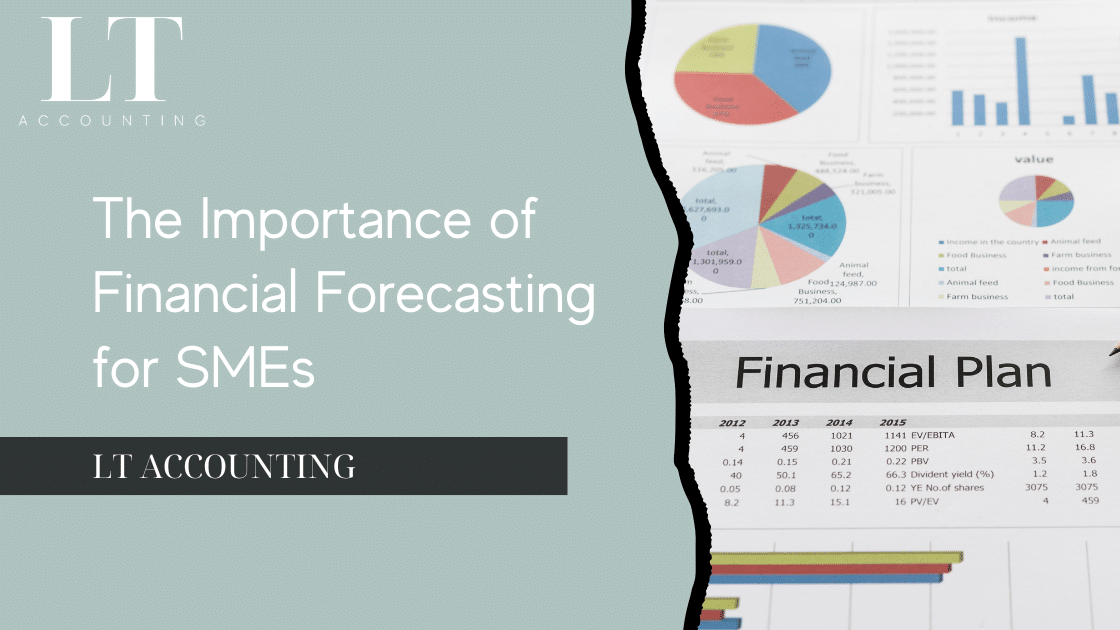The Process of Creating Financial Forecasts
Developing a financial forecast is a fundamental step for startups aiming to navigate the complexities of the business landscape successfully. This process requires a blend of analytical rigor and strategic foresight, enabling entrepreneurs to envision the financial future of their ventures. Here’s a detailed guide to crafting financial forecasts that can serve as a beacon for your startup’s journey.
Step-by-Step Guide to Developing Financial Forecasts
- Gathering Historical Data and Market Research: The foundation of any financial forecast is a solid understanding of the past and present. For startups, this may include any pre-existing financial data, industry benchmarks, and comprehensive market research. Understanding market size, customer behavior, and competitive landscape helps in making informed predictions.
- Identifying Revenue Streams: Start by outlining all possible sources of income. This could range from direct sales, subscription services, to ancillary services. For each revenue stream, develop a model that predicts income based on realistic assumptions about market penetration, pricing strategy, and sales volume.
- Projecting Expenses: Divide your expenses into fixed and variable categories. Fixed expenses might include rent, salaries, and insurance, whereas variable expenses could include manufacturing costs, marketing, and shipping. Use historical data or industry averages to forecast these expenses accurately.
- Calculating Cash Flow Projections: Cash flow forecasting involves estimating the cash that flows in and out of your business over a specific period. This projection is critical for ensuring that your startup maintains adequate liquidity to cover operational needs and capital investments.
- Creating Profit and Loss Statements: The P&L statement, also known as an income statement, summarises the revenues, costs, and expenses incurred during a specific period. This document highlights the startup’s profitability, providing insights into how efficiently it can convert revenue into profits.
Tools and Software for Financial Forecasting
Leveraging technology can streamline the financial forecasting process. Numerous tools and software are available, ranging from simple spreadsheet templates to sophisticated financial modeling software. These tools can automate calculations, facilitate scenario analysis, and help maintain accuracy in your forecasts. Popular options include Excel, QuickBooks, and more specialised software like PlanGuru and Float.
Challenges and Best Practices
- Accuracy vs. Flexibility: Striking a balance between accuracy and flexibility is crucial. While it’s important to base your forecasts on realistic assumptions, remain flexible to adjust them as more data becomes available or as market conditions evolve.
- Regular Review and Update: Financial forecasts should not be static documents. Regularly reviewing and updating your forecasts ensures they reflect the latest business performance and market dynamics.
- Seek Expert Advice: Consider consulting with financial experts or accountants, especially those with experience in your industry. They can provide valuable insights, identify potential flaws in your forecasts, and suggest improvements.
Financial forecasting is an indispensable exercise for startups, providing clarity and direction in a sea of uncertainty. By meticulously following the steps outlined above, entrepreneurs can create robust financial forecasts that not only attract investment but also guide strategic decision-making. Remember, a forecast is only as good as the assumptions it’s based on, so invest the time in research, analysis, and consultation with experts to ensure your startup is positioned for success.
The Role of Assumptions in Financial Forecasting
The creation of a financial forecast is an exercise in foresight, underpinned by a series of educated guesses or assumptions. These assumptions are the bedrock of your financial model, influencing every revenue projection, expense estimate, and cash flow calculation. Their accuracy and realism directly affect the reliability of the forecast, making the process of assumption-making pivotal for startups.
Understanding the Necessity of Assumptions
Financial forecasts are inherently predictive, relying on assumptions about future market conditions, sales volumes, price points, growth rates, and cost structures. These assumptions are necessary because they fill the gap between the known present and the uncertain future. They enable startups to model potential financial outcomes based on different scenarios, helping founders and investors make informed decisions.
How to Make Informed Assumptions
- Leverage Historical Data: If your startup is already operational, historical financial data can provide a solid basis for forecasting. Use this data to identify trends and growth rates that can inform future projections.
- Conduct Market Research: Deep dive into market research to understand your industry’s growth patterns, consumer behavior, and competitive landscape. This information will help you make educated guesses about market penetration and pricing strategies.
- Competitors: Look at the financial performance of similar companies, especially those that are publicly traded and have to disclose financial information. This analysis can offer valuable benchmarks for sales growth, profit margins, and expense ratios.
- Consult Industry Experts: Engage with industry experts, mentors, and advisors who can provide insights into market trends, potential regulatory changes, and other external factors that could impact your financial projections.
Balancing Optimism with Realism
One of the most challenging aspects of making assumptions is striking the right balance between optimism and realism. Startups are naturally optimistic about their prospects, but overly optimistic forecasts can lead to unrealistic expectations and misinformed decisions. Conversely, overly conservative assumptions may undervalue the startup’s potential, affecting fundraising and strategic opportunities. Aim for a middle ground, using data and research to justify your projections.
The Impact of Assumptions on Financial Forecasts
The assumptions you make directly impact every aspect of your financial forecast, from revenue projections to cash flow analysis. For example, an assumption about the rate of market adoption affects sales projections, which in turn influences revenue, cash flow, and profitability forecasts. Similarly, assumptions about cost inflation rates can significantly affect your expense projections.
Best Practices for Documenting Assumptions
- Transparency: Clearly document and justify each assumption in your financial model. This transparency helps stakeholders understand the basis of your forecasts and builds credibility.
- Sensitivity Analysis: Perform sensitivity analysis to assess how changes in key assumptions impact your financial outcomes. This analysis can identify which assumptions have the most significant effect on your forecast, highlighting areas where accuracy is crucial.
- Regular Review: The market and your startup’s performance will evolve, so regularly review and adjust your assumptions as necessary. This iterative process ensures your financial forecast remains relevant and reliable.
The assumptions underpinning a financial forecast are as critical as the numbers themselves. By carefully crafting these assumptions with a blend of optimism and realism, startups can develop financial projections that not only guide internal decision-making but also demonstrate their potential to investors. Remember, the goal is not to predict the future with absolute certainty but to provide a well-reasoned outlook that supports strategic planning and investment decisions.
Financial Forecasting and Investment Decisions
For startups, securing investment is often a critical step towards achieving growth and operational goals. Financial forecasting plays a pivotal role in this process, serving as a vital communication tool that conveys the startup’s potential to investors. Understanding how financial forecasts influence investment decisions can empower entrepreneurs to craft more compelling and persuasive financial narratives.
How Investors Evaluate Financial Forecasts
Investors scrutinise financial forecasts to assess a startup’s viability, growth potential, and the realism of its financial planning. Here are key aspects investors look for:
- Growth Potential: Investors are particularly interested in revenue growth projections. They seek to understand how the startup plans to increase sales over time and what market dynamics will drive this growth.
- Profitability Projections: While early-stage startups may not be profitable, investors want to see a clear path to profitability. They evaluate the gross margins, operating margins, and the timeline to reaching breakeven.
- Cash Flow Management: Investors examine cash flow forecasts closely, as they reveal the startup’s ability to manage its cash and sustain operations until it becomes profitable or secures further funding.
- Realism and Credibility: Investors assess the realism of the forecasts, looking for well-researched, data-backed projections. Overly optimistic or unsubstantiated forecasts can raise doubts about the management team’s credibility and understanding of the business.
The Impact of Financial Forecasting on Funding Opportunities
A robust financial forecast can significantly enhance a startup’s appeal to various types of investors, including venture capitalists, angel investors, and traditional lenders. Here’s how financial forecasting influences funding opportunities:
- Venture Capitalists (VCs): VCs look for high-growth potential and scalability in their investments. A compelling financial forecast that demonstrates significant market opportunity and a strong return on investment can attract VC attention and funding.
- Angel Investors: These investors may be more willing to take risks on early-stage startups but still require a convincing financial forecast that shows a clear vision for growth and profitability.
- Bank Loans: Traditional lenders, like banks, focus on the startup’s ability to repay the loan. A detailed financial forecast, showing steady cash flow and profitability, can improve the chances of securing a loan.
Tips for Presenting Financial Forecasts to Potential Investors
- Clarity and Conciseness: Present your financial forecasts clearly and concisely. Avoid overwhelming investors with excessive detail, focusing instead on the key figures and trends that highlight your startup’s potential.
- Address Assumptions: Clearly explain the assumptions behind your forecasts. This transparency builds trust and demonstrates that your projections are grounded in realistic expectations.
- Showcase Scenario Analysis: Include best-case, worst-case, and most likely scenarios to show investors that you’ve considered a range of outcomes and have plans to mitigate risks.
- Highlight Milestones: Use your financial forecast to outline key milestones you plan to achieve with the investment, linking financial projections to strategic goals and operational milestones.
- Be Prepared to Defend Your Projections: Investors will likely question your forecasts, so be prepared to defend your assumptions and methodologies. This demonstrates your deep understanding of your business and market.
Financial forecasting is more than a set of numbers; it’s a strategic tool that startups can use to communicate their vision, potential, and strategy to investors. By presenting well-researched, realistic financial forecasts, startups can significantly enhance their attractiveness to investors, opening up opportunities for funding that can propel their business forward. Remember, the goal is to provide a compelling, data-driven story that aligns with your strategic objectives and convinces investors of your startup’s potential for success.
In the final section, we will discuss the importance of revising and updating financial forecasts, ensuring they remain accurate and reflective of the startup’s performance and market conditions.
Revising and Updating Financial Forecasts
Financial forecasts are dynamic tools that require regular review and adjustment to remain relevant and accurate. As startups evolve, so too do their financial landscapes, influenced by internal performance metrics and external market conditions. The practice of regularly revising and updating financial forecasts is crucial for maintaining their integrity and utility in strategic decision-making.
The Importance of Regular Updates
- Reflecting Actual Business Performance: Over time, a startup’s actual financial performance will provide new data that can refine future forecasts. Incorporating actual results into the forecasting model helps adjust for over- or under-estimations, ensuring more accurate future projections.
- Adapting to Market Changes: The market environment is continually changing—new competitors emerge, customer preferences shift, and economic conditions fluctuate. Regular updates to your financial forecasts allow you to account for these changes, keeping your strategies aligned with the current market.
- Managing Risk: By updating forecasts, startups can identify potential financial shortfalls or challenges ahead of time, allowing for proactive measures to mitigate risks. This ongoing adjustment process is key to maintaining financial health and operational stability.
How to Revise and Update Financial Forecasts
- Set a Regular Review Schedule: Establish a routine, such as quarterly or bi-annually, for reviewing and updating your financial forecasts. This schedule should align with your business’s reporting cycles and significant market events.
- Incorporate Actual Financial Results: Use your latest financial statements to compare against your forecasts. Analyse variances to understand why they occurred and adjust your projections accordingly.
- Monitor Market and Industry Trends: Stay informed about developments in your industry and the broader economy. Incorporate relevant trends into your forecasts to ensure they reflect current and anticipated market conditions.
- Engage Stakeholders: Regularly discuss financial forecasts with your team, advisors, and investors. Their insights can provide valuable perspectives on your assumptions and projections, leading to more robust forecasts.
- Utilise Forecasting Software: Leveraging advanced forecasting tools can simplify the process of updating your forecasts. Many software options allow for real-time data integration and scenario analysis, facilitating more efficient revisions.
Best Practices for Effective Forecast Management
- Flexibility: Maintain flexibility in your forecasting approach, allowing for adjustments as new information becomes available. This adaptability is crucial for navigating uncertainties and seizing opportunities.
- Transparency: Be transparent about the reasons behind forecast revisions, both internally and with external stakeholders. This openness builds trust and confidence in your financial management practices.
- Scenario Planning: Regularly update and review different financial scenarios (e.g., optimistic, pessimistic, and most likely) to prepare for a range of possibilities. This practice enhances strategic agility and risk management.
Conclusion
Revising and updating financial forecasts are not just about maintaining accuracy; it’s about ensuring your startup remains agile, informed, and strategically aligned in a rapidly changing business environment. Regularly updated forecasts serve as a living document that guides your business decisions, supports strategic pivots, and communicates confidence to investors. By adopting a disciplined approach to forecast management, startups can navigate the uncertainties of business growth with greater clarity and conviction, laying the groundwork for sustained success.
This comprehensive guide to financial forecasting for startups has underscored the importance of financial foresight in building a roadmap to success. From understanding the basics of financial forecasting to leveraging it for investment decisions and maintaining its accuracy through regular updates, startups are equipped to navigate their financial future with confidence. As you embark on this journey, remember that financial forecasting is more than just numbers—it’s a strategic tool that encapsulates your vision, strategy, and commitment to building a thriving business.




